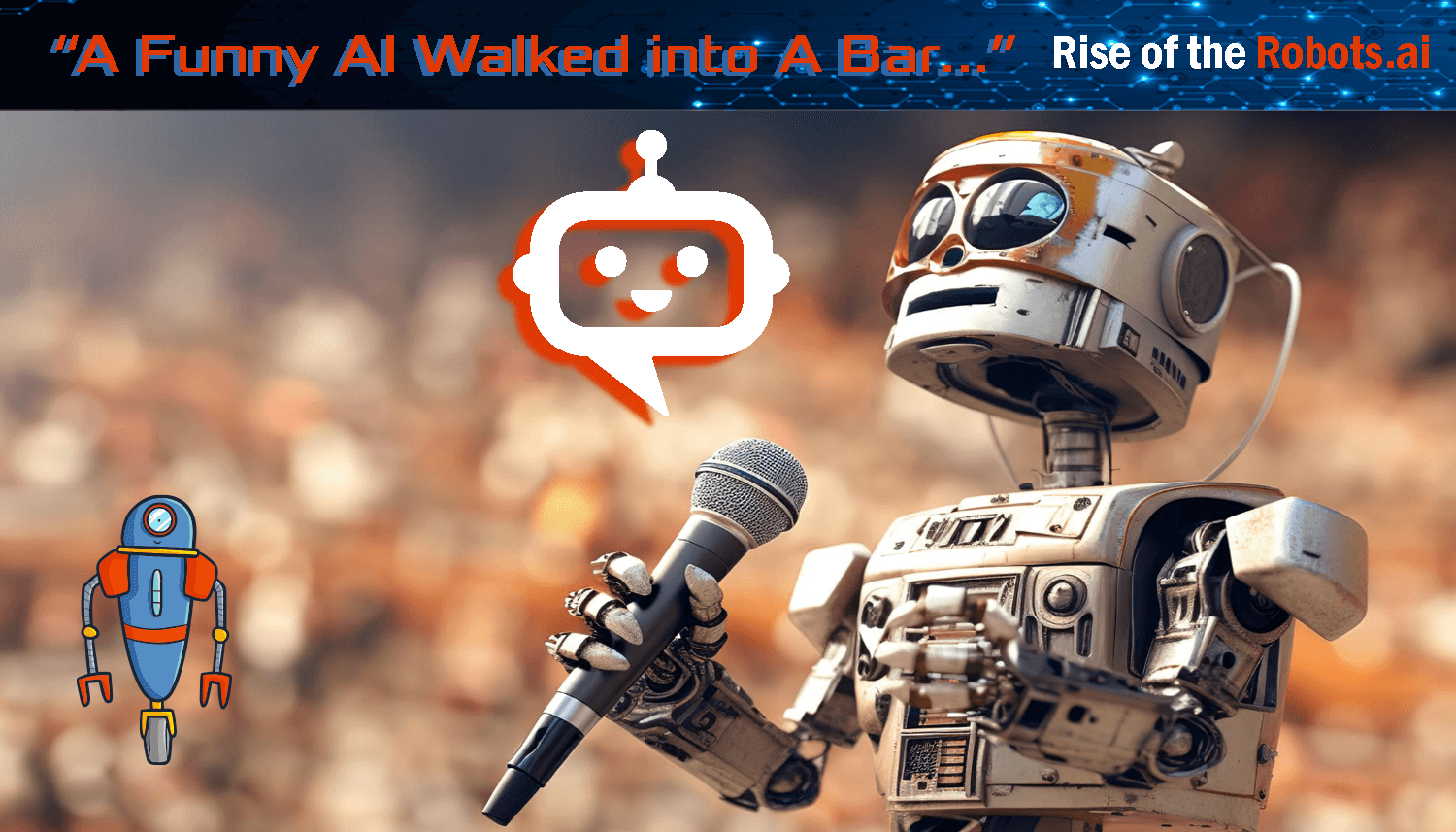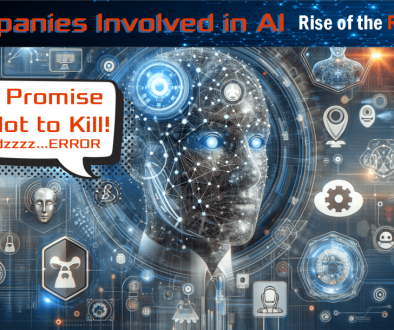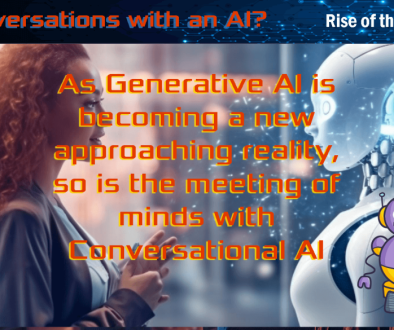Robots have long been capable of entertaining audiences with comedy; however, AI-enabled robots represent a new frontier for robot development. Researchers like Naomi Fitter at Oregon State University’s School of Mechanical, Industrial and Manufacturing Engineering are pioneering this effort by equipping robots to engage audiences more efficiently through entertainment.
Large neural networks have proven adept at producing comedy from text data, but can they understand why their jokes are amusing?
AI technology may pose serious threats to jobs and humanity; it has already made its mark in comedy. Google CEO Sundar Pichai recently took to the stage at an event where he introduced an artificial intelligence that creates humor content; some see this as an essential first step toward replacing human comedians with AI-generated comedians. But do you really want to listen to artificial comedy?
AI comedian development requires taking an entirely different approach than developing other AI programs. Humoring others requires more than understanding speech or data patterns – for an AI to succeed at making people laugh it must have world knowledge, comprehend local cultures and customs, accurately read room dynamics and be capable of creating and understanding jokes rather than simply understanding what makes something amusing.
While researchers strive to develop AI comedians capable of performing stand-up comedy, current technology still needs improvement. Much of their focus has been on developing generative language models with deep learning algorithms for processing large amounts of data and producing human-like responses such as “an Englishman, an Irishman, and a Scotsman walk into a bar.” Jokes generated by such models tend to be straightforward and predictable, such as: “An Englishman, an Irishman, and a Scotsman walked into a bar.”
Other methods attempt to create comedy through computational creativity, which involves analyzing existing humor material and then replicating it. One such attempt involves Jon, the robot stand-up comedian who adjusts his routine based on how loudly people laugh at his jokes; although this method achieves some success, human humor still reigns supreme!
What Is Ai Comedy?
Some comedians may fear computer programs taking over as entertainers for audiences, as it’s hard to picture machines grasping all the subtle nuances necessary for comedy to work effectively. But experts in computational humor believe this fear may be overstated: while AI may produce passable formulaic material (such as those found on YouTube “fail” videos), originality may remain beyond its capabilities.
AI has achieved considerable success in fields like music and art, but has struggled to master humor. One potential explanation could be its complexity: Spirit requires an in-depth knowledge of human psychology – more than simply understanding how a joke works; it needs to anticipate reactions it might cause too – making this task an ongoing process that may only ever be completely achieved.
AI technology has already proven beneficial to comedians. It can analyze past works to measure laughter levels and assist with creating new joke ideas as well as helping develop performance techniques such as timing and body language improvement.
Jon the Robot Comedian
Oregon State University students recently unveiled an autonomous robot named Jon to crack jokes and read audience reactions. With its articulated arms making subtle gestures while being programmed to recite jokes in specific order and use positive or negative tags depending on audience reactions to respond appropriately.
Researchers utilized a recurrent neural network to train a robot on basic concepts related to humor such as wordplay and absurd comparisons, reading body language to gauge audience reaction and adjust performance accordingly, reading body language in order to read an audience reaction accurately, as well as reading/interpreting an audience’s reaction accurately so they could adjust performance appropriately. They believe their robot performed so well it warranted an impressive 32-show comedy tour across Los Angeles and Oregon clubs, giving scientists insight into how humans and robots communicate through humor.
Arlington Cinema and Drafthouse hosted their own take on this experiment with real comics versus robot comedians at Comedy GPT. This event included stand-up, improv and karaoke performances by AI as well as human performers – while an audience watched. We shall see if it becomes part of their regular comedy calendar!
Populist speculation surrounding artificial intelligence’s potential rise against us and comedy-telling abilities has become widespread, yet experts in computational humor do not see this threat as immediate. Language models can be taught to craft passable jokes using systematized pattern recognition processes; however, truly original and pathbreaking comedy remains beyond them.
Humoring AI can be difficult as humor involves more than words alone; to make AI amusing requires knowledge of cultural references and context as well as intuition and spontaneity – not all jokes must be immediately obvious. Sometimes, they can refer to events or topics not directly humorous but become humorous over time depending on context.
Is the Future of Ai Funny?
Researchers used machine learning to train an algorithm to recognize and recreate humorous scenes before testing it on volunteers who rated its amusement. When making predictions against actual participant ratings, their predictions proved 61% accurate!
Abhinav Moudgil, a computational humor researcher, took an innovative approach to developing humor AI. His research utilizes recurrent neural networks – an alternative approach from traditional rule-based models – capable of recognizing patterns in human language and producing amusing sentences. Though Moudgil believes his network won’t land him any comedy writing gigs anytime soon, he remains confident it can aid other researchers studying humor AI.
Many fear artificial intelligence (AI) will one day replace human comedians, yet experts in humor hold an alternative viewpoint. Humans remain superior at understanding humor due to its complex relationship between culture, context, linguistic nuance, sarcasm/irony and reading rooms – a distinction only AI cannot fully address.
Thus, AI comedians could become common in the near future. AI with joke-crafting capability could help both established and emerging comedians improve their performances by using audience responses to assess whether joke timing needs changing; predict which jokes will most appeal to an audience; as well as provide responses based on noise levels in a room.
AI can assist comedians by helping to generate new ideas. While some AI-generated jokes have proved amusing, others might still seem corny or lack quality. The next step should be creating AI capable of producing comedy sets on an expert level – something particularly useful on late night television, where hosts create lengthy set pieces over months or years to perfect their performances.
Experts anticipate that AI may one day create some form of humor, though it will never match what professional comedians create. Comedy relies on complex rules and expectations which computers may find hard to grasp.



